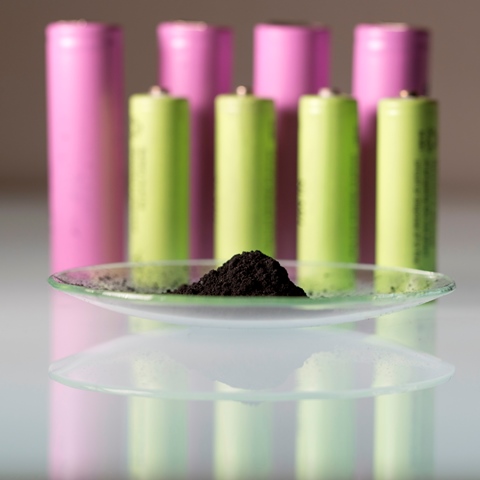NEW-BAT – Efficient Recycling of Lithium-Ion Batteries
Lithium-ion batteries are key elements in electromobility and a successful energy turnaround. The widespread use of these energy storage devices will come along with large quantities of spent batteries which itself constitute a valuable source of raw materials. However, their production from base elements is costly and complex. In the project NEW-BAT, scientists and engineers from research institutions and industry join forces to develop a new system to completely recover and process all battery materials (especially lithium metal oxides) for direct re-use in new batteries.
Intelligent separation over simple shredding
The most distinctive feature of the new recycling process is the electro-hydraulic materials fragmentation by shock waves. This takes place under water or in other liquids. The shock waves are generated by an electrical discharge, and the water or other liquid serves to uniformly impart them onto the infeed material. This method enables composites and building blocks to come apart at the interfaces of different materials in a practically non-contact manner. The material mix thus derived from the many battery components – cathode, anode, electrolyte, separator as well as cell and battery casings – can then be sorted out efficiently in a next step. In order to obtain the purest recyclates possible, separation methods account for physical properties such as grain size and density as well as for varied chemical compositions. The method equally suitable for spent batteries and scrap material from battery production.
Functional coatings as finishing touch
It is the electrode materials that age the most during a battery’s life. Recycled materials therefore must be carefully tested and treated to restore their original quality. Fraunhofer ISC and its Center for Electromobility is in the position to offer special low temperature procedures suitable for Lithium-ion battery materials to remove undesirable degradation products from surfaces and to repair crystal structure defects. This treatment can even be combined with the application of a finishing core-shell coating which significantly improves the life and the charge and discharge properties of the recycled materials.
